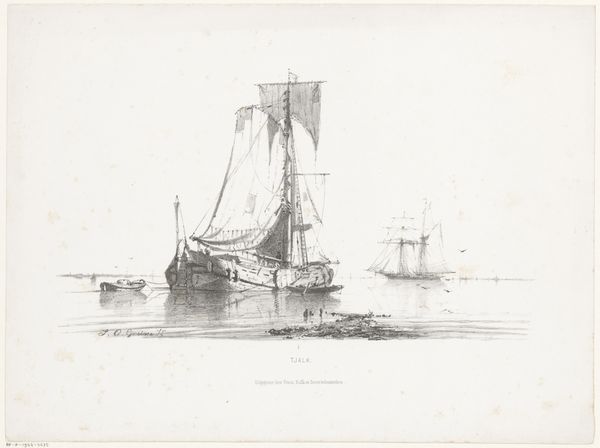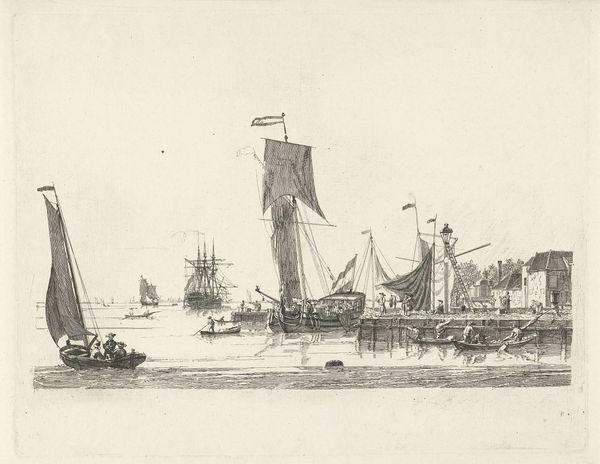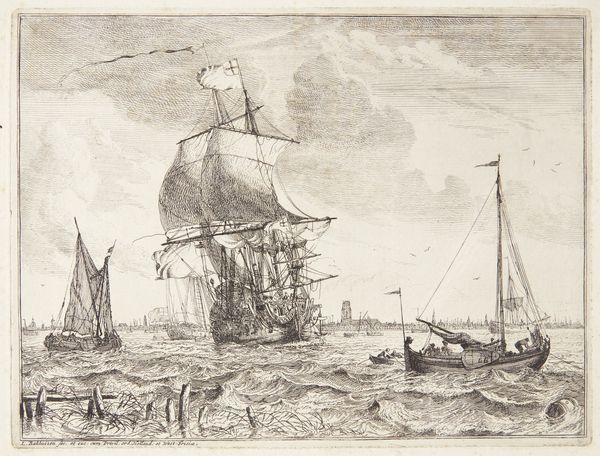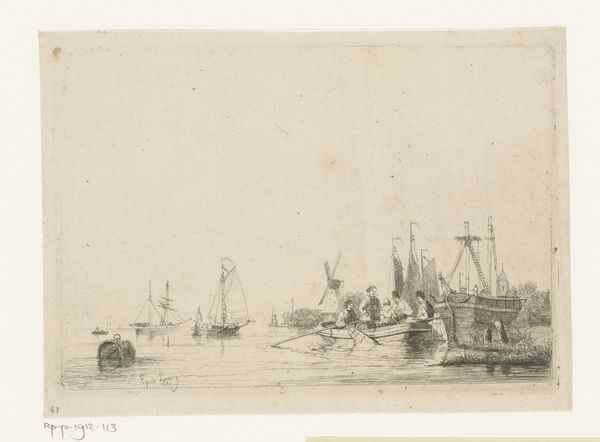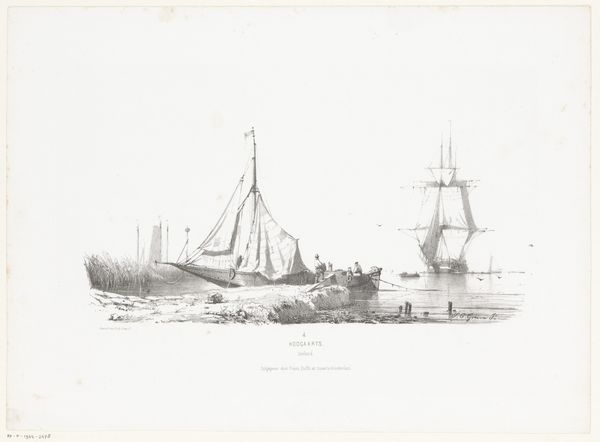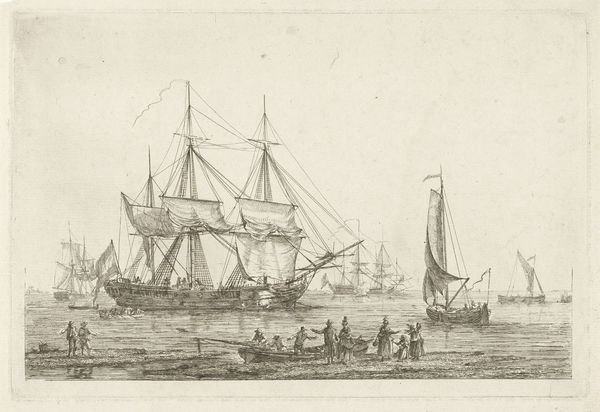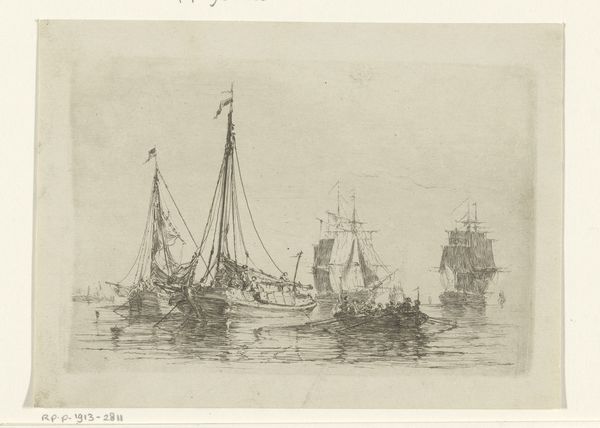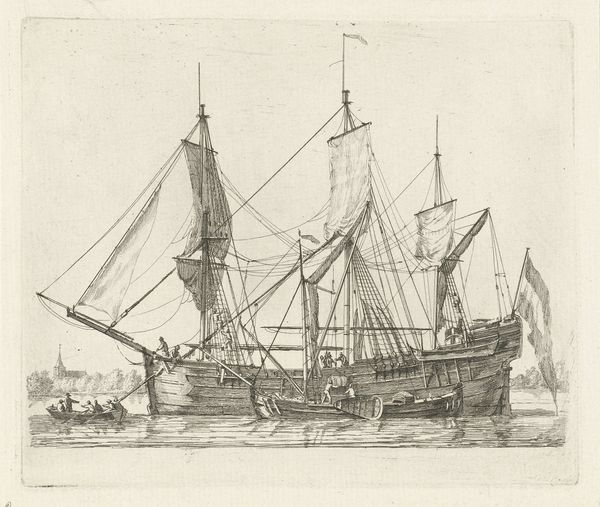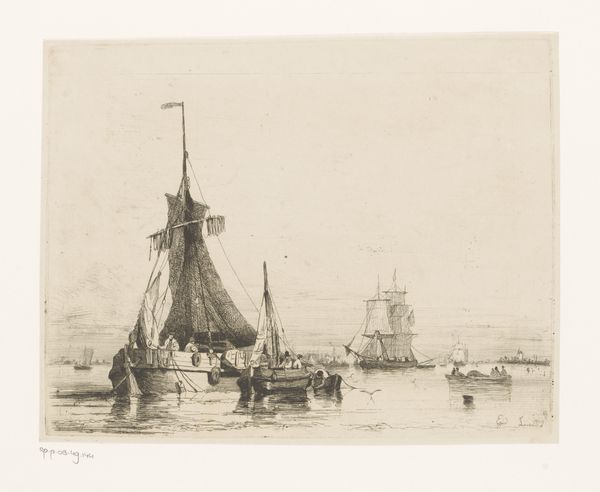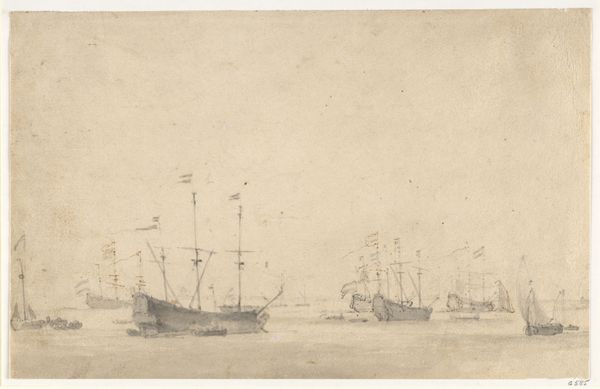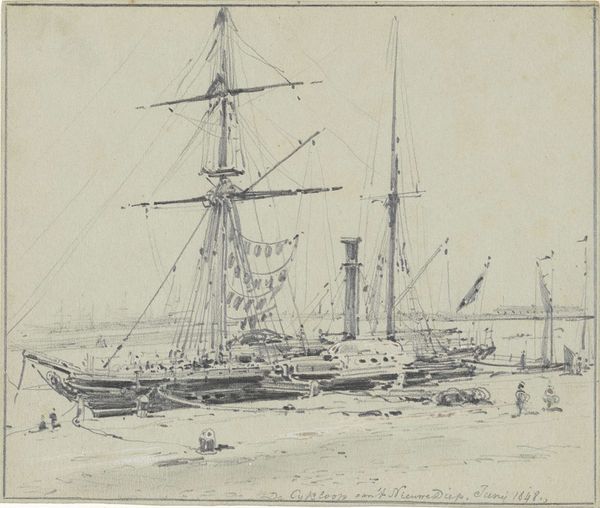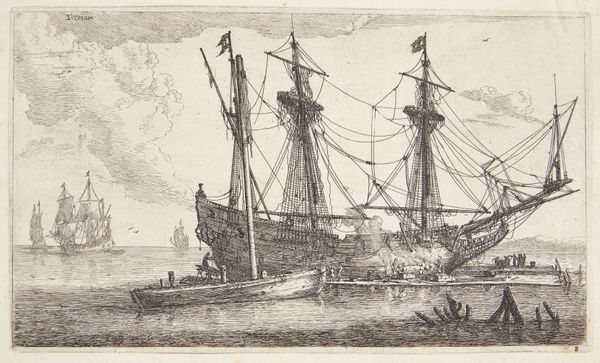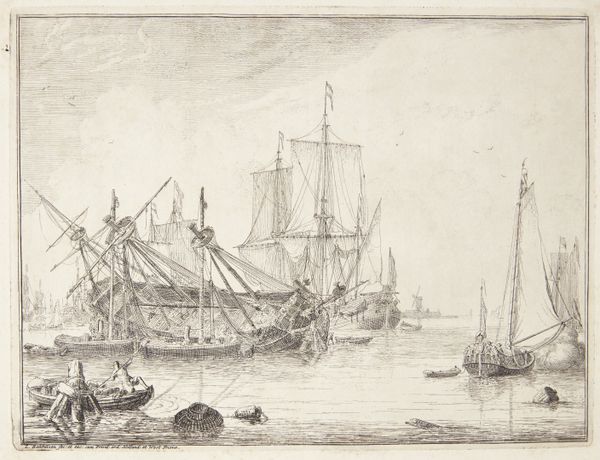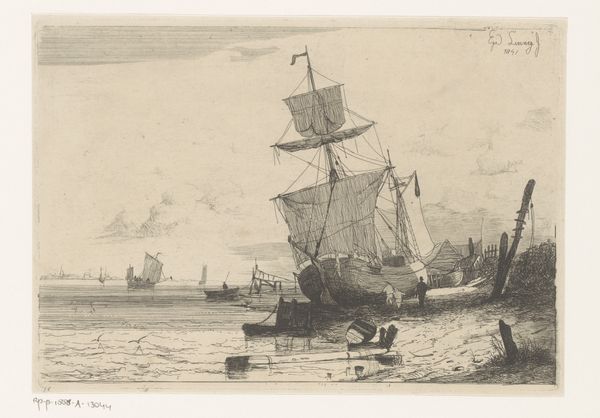
Dimensions: height 214 mm, width 306 mm
Copyright: Rijks Museum: Open Domain
Editor: Here we have "Zeilschepen in het water," or "Sailboats in the Water," by Charles Louis Mozin, likely created between 1850 and 1884, using graphite and printmaking techniques. There's a striking realism to the ships and I’m fascinated by the linear quality of the etching. What aspects stand out to you? Curator: Well, I find myself drawn to the socioeconomic aspects suggested by the work's materiality. Think about it: Graphite, paper, printmaking – relatively accessible materials, capable of mass production. How might the availability of these materials influence Mozin's artistic choices and the consumption of his art? Editor: That's interesting, I hadn't considered the accessibility of the materials. Does that mean he might have been trying to appeal to a wider audience beyond the elite? Curator: Precisely! And it makes one wonder about the social status of those depicted in the scene. Are they merchants, sailors, or laborers involved in shipbuilding or trade? Consider how their roles might reflect or challenge the hierarchical structures of the time. How is Mozin depicting labour and the means of production in 19th century Europe? Editor: So by examining the materials and production process, we can actually glean insights into the society and its class dynamics! Curator: Exactly. We can examine how materials intersect with cultural values and labour practices. It’s about unraveling the story embedded in the work itself – how it was made, who it was made for, and what it tells us about the world in which it existed. Editor: This gives me a new appreciation for not just the aesthetic of the work, but for the entire material and social context in which it was produced. Curator: Indeed. Art is never created in a vacuum. By paying attention to the physical and economic realities that shape its creation, we unlock new levels of meaning.
Comments
No comments
Be the first to comment and join the conversation on the ultimate creative platform.
